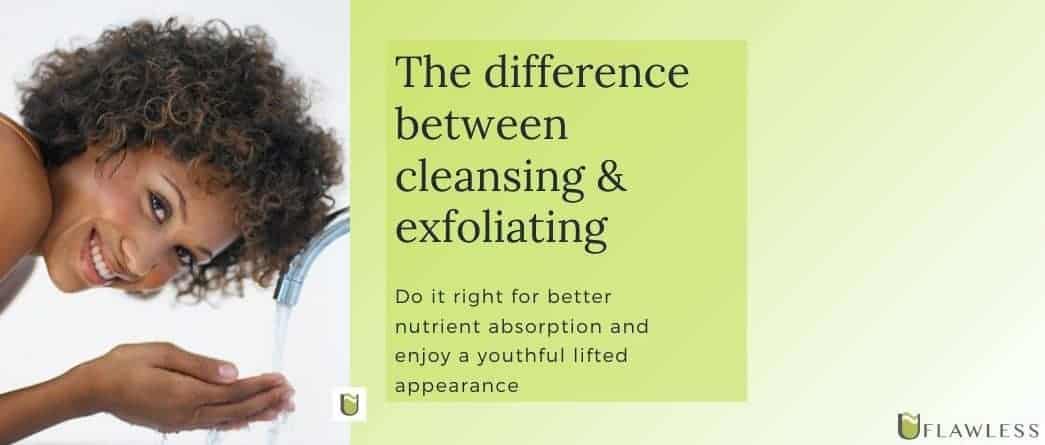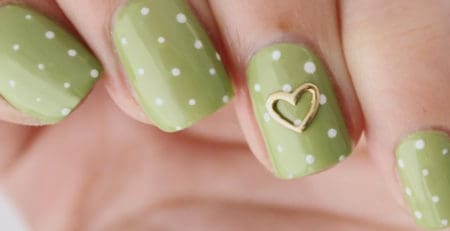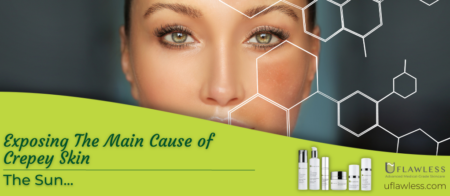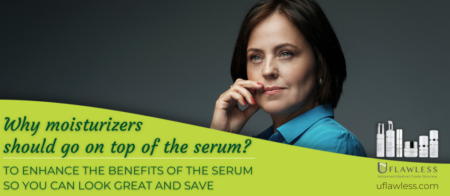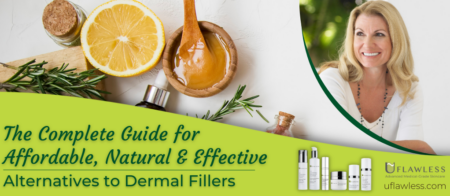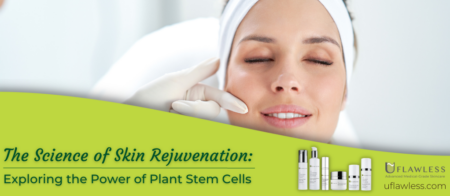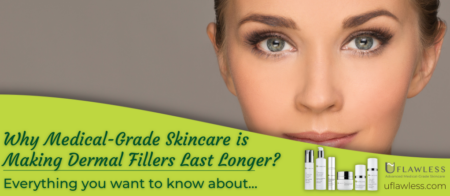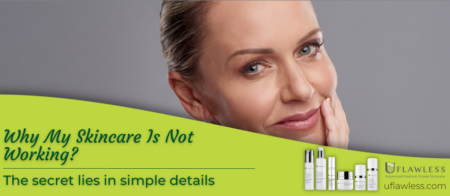The Difference Between Cleansing and Exfoliating The Skin
Understanding the difference between cleansing and exfoliating is the key to achieving naturally radiant complexion without breaking the bank! Many people mistakenly believe cleansing and exfoliating are the same.
- Cleansing involves the removal of debris, oil, pollution, dust, makeup, and even bacteria from the skin.
- Exfoliating, on the other hand, shares similarities with cleansing but delves deeper, focusing on eliminating dead skin cells.
By the Way, keep reading and you’ll find a way to claim your FREE SAMPLES, so you can feel the difference between cleansing and exfoliating, using advanced products! You’ll see and feel the difference on the first use!
Both processes promote a healthier environment for the skin to breathe, preparing it for subsequent treatments such as acne therapy, rosacea management, or anti-aging solutions.
In essence, these practices prime the skin and pores for optimal absorption of nutrients, antioxidants, and active ingredients.
The more effectively your skin takes in these essential elements, the more stunning your complexion will become!
Cleansing vs. Exfoliating: Scientific Secrets for a Youthful Glow
To create a solid foundation for your article on understanding the difference between cleansing and exfoliating the skin for a youthful look, consider incorporating the following scientific facts, based on the references* on the bottom of this article:
- The skin’s natural renewal process: Our skin continuously regenerates, with new cells forming at the lower layers and gradually moving to the surface as they mature. This process typically takes around 28 days for younger individuals and may slow down as we age. Including this information can help emphasize the importance of regular cleansing and exfoliating to maintain a youthful appearance.
- The role of pH balance: The skin’s surface has a slightly acidic pH, ranging from 4.5 to 6.2. This “acid mantle” plays a crucial role in maintaining the skin’s barrier function and preventing infections. Mentioning the importance of using pH-balanced cleansing and exfoliating products can highlight the need for proper skincare routines.
- The benefits of exfoliation: Regular exfoliation can improve the skin’s texture, tone, and overall appearance by promoting cell turnover and stimulating collagen production. Including scientific studies that support these benefits can help your article rank better on Google.
- Types of exfoliation: Explain the difference between physical exfoliants, such as scrubs and brushes, and chemical exfoliants, like alpha-hydroxy acids (AHAs) and beta-hydroxy acids (BHAs). Providing information about the different types of exfoliation and their respective benefits can add depth to your article.
- The importance of proper skincare routines: A consistent skincare routine, including cleansing and exfoliating, can help maintain healthy skin and prevent common issues such as acne, dullness, and premature aging.
Don’t Miss the Opportunity to Claim Your Free-Samples!
So you can try the difference using an advanced cleanser and a premium exfoliant
Don’t let this amazing opportunity pass you by!
Experience the power of advanced skincare with our FREE samples of UFlawless Cleanser and Premium Exfoliant.
You’ll feel the difference in your skin’s texture on the first use!
And tone as you use these top-quality products, specially designed to deliver outstanding results.
For a limited time, you can get these samples absolutely free – all you need to cover is the shipping & handling cost.
It’s a small investment for a chance to revolutionize your skincare routine and reveal a more radiant, youthful appearance.
Don’t hesitate to claim your FREE Samples today and unlock the secret to beautiful, glowing skin!
Exfoliating or Cleansing? When Using Both Are Necessary?
Navigating the world of skincare recommendations can be confusing, especially when it comes to understanding when to exfoliate and when to cleanse.
So, how can you determine the best approach for your skin? Let’s break it down.
As we’ve discussed in previous articles, our skin has seven layers, with the outermost layer, the stratum corneum, primarily consisting of dead cells.
This layer plays a crucial role in protecting the underlying epidermis from harmful bacteria.
While it’s essential to exfoliate regularly to remove these dead cells and promote skin cell turnover, daily exfoliation is not recommended.
Depending on your skin type, dermatologists may suggest exfoliating once a week (for dry skin) or twice a week (for oily skin).
Cleansing, on the other hand, is a daily step in any skincare routine. Throughout the day, our skin is exposed to bacteria, dust, and pollution.
The most vulnerable areas are the face and hands.
Just as our parents reminded us to wash our hands regularly, we should also cleanse our faces daily.
Factors such as air conditioning, heaters, and even indoor environments can introduce bacteria to our skin and pores.
New skin cells turnover approximately every six weeks, making it essential to maintain a clean and moisturized environment for healthy skin.
Over-exfoliating can lead to damage, dryness, and skin irritation.
Therefore, it’s crucial to strike a balance between exfoliating and cleansing to achieve a radiant, youthful complexion.
Discover the Best Way to Exfoliate Your Face for Radiant Skin
There isn’t a one-size-fits-all method for exfoliating your face, and the best approach varies depending on your skin type and the specific product.
The key is to choose an exfoliant that’s gentle and clinically tested, ensuring it won’t cause damage to your skin.
Opting for cutting-edge actives and natural ingredients is always a wise decision, as they often provide the most effective and safe results.
To determine the best exfoliant for your skin, it’s essential to consult with a skin specialist or dermatologist for a personalized assessment.
At-home exfoliation options include brushes, scrubs, or soaps containing particles that create friction and help slough off dead skin cells.
Chemical exfoliants, such as alpha and beta hydroxy acids, are another alternative. However, it’s crucial not to over-scrub or overuse chemicals, as this can lead to skin damage.
When considering chemical exfoliants, be cautious with retinoids and benzoyl peroxide.
Using low-quality products or applying them improperly can result in acne breakouts, dryness, and irritation.
- For sensitive or acne-prone skin, a washcloth and mild chemical exfoliant are usually the best choices, as scrubs or brushes may be too harsh.
- Oily skin often benefits from chemical exfoliants, but remember to be gentle, especially if you have open cuts, bumps, or active acne.
Exfoliating your face for 30 seconds is typically sufficient to achieve a clean, refreshed complexion. Rinse with lukewarm water—avoiding hot water—to prevent overdrying your skin.

The Importance of Cleansing for Flawless Skin: Unlocking the Power of Your Skincare Routine
Unlock your skin’s full potential by effectively cleansing to remove debris and unclog pores, paving the way for enhanced nutrient absorption.
There’s wisdom in the adage that neglecting proper cleansing can undermine the effectiveness of even the most expensive creams and serums.
In essence, to truly experience the advantages of a skincare routine, it’s vital to prioritize thorough cleansing, which can boost the benefits by up to 7 times!
Maximizing the Benefits of Moisturizing After Cleansing and Exfoliating: Nourish Your Skin Effectively
Post-exfoliation, using a gentle cleanser to soothe and completely remove any residue from exfoliators primes your face for nourishment and hydration.
With clean, refreshed pores, your skin is now prepared to absorb the nutrients present in the moisturizers you apply.
Considering that 60% of what we apply on our skin gets absorbed, it’s crucial to make the most of this absorption for optimal skin health.
The Significance of Cutting-Edge Actives and Natural Ingredients for Healthy Skin
Your skin, the largest organ in your body, needs proper nourishment just like any other organ.
Using the best ingredients available in the market is crucial for optimal skin health.
As we emphasize a lot in other articles, our skin has seven layers, with wrinkles, fine lines, and crow’s feet originating in the deeper layers – specifically, the Dermal-Epidermal Junction and Dermis, where collagen and elastin synthesis occurs.
Over The Counter (OTC) products often lack the potency required to penetrate these deep layers, providing only short-term, surface-level results.
Medical Grade Formulations, on the other hand, offer pure and safe concentrations of actives, developed with high-tech standards to deliver both safety and effectiveness.
In conclusion, understanding the difference between cleansing and exfoliating is vital for a successful skincare routine.
Investing in pricey serums without properly cleansing your skin is akin to drinking pure water from a dirty glass – you’re not maximizing the benefits of your regimen!
Explore the advantages of Medical Grade Skincare and consider incorporating it into your routine for truly transformative results. Click here to learn more about Medical-Grade Skincare.
For immediate results after exfoliating the skin
Even though is hard to believe that you can have immediate results through exfoliation, here’s an incredible routine you can try paying only for Shipping & Handling.
The SAMPLES are FREE! So you can ENJOY the benefits of using natural ingredients to CLEANSE and EXFOLIATE your skin for healthy-looking skin!
Made with a combination of Cutting-Edge Active Natural Ingredients such as Pomegranate Enzymes, Potent Antioxidants such as Niacinamide and Panthenol, combined with 100% Biodegradable polishing powder, this Exfoliating Cream is the best way to see immediate polished skin.
You’ll also see and feel:
- Moisturized skin
- Smoother skin texture
- More radiant complexion
- Polished, toned, brighter skin
100% Satisfaction Guaranteed!
Other Products Featured in this article so you can check the difference between cleansing and exfoliating
-
2Week-Boost X3 Anti-Aging Routine |
Original price was: $94.00.$81.00Current price is: $81.00.
Scientific References* to Support Understanding the Difference Between Cleansing and Exfoliating
- Levit, F. (2017). Skin care in the aging female: myths and truths. Journal of Clinical Investigation, 127(2), 454-461. doi: 10.1172/JCI92069
- Ramkumar, S., & Ranganathan, S. (2014). Skin pH: From Basic Science to Basic Skin Care. Acta Dermato-Venereologica, 94(3), 261-267. doi: 10.2340/00015555-1672
- Farage, M. A., Miller, K. W., & Maibach, H. I. (2010). Degenerative Changes in Aging Skin. In Textbook of Aging Skin (pp. 25-34). Springer, Berlin, Heidelberg. doi: 10.1007/978-3-540-89656-2_3
- Del Rosso, J. Q., & Zeichner, J. A. (2016). Cleansers and their role in various dermatologic disorders. Journal of Clinical and Aesthetic Dermatology, 9(1), 36-43.


